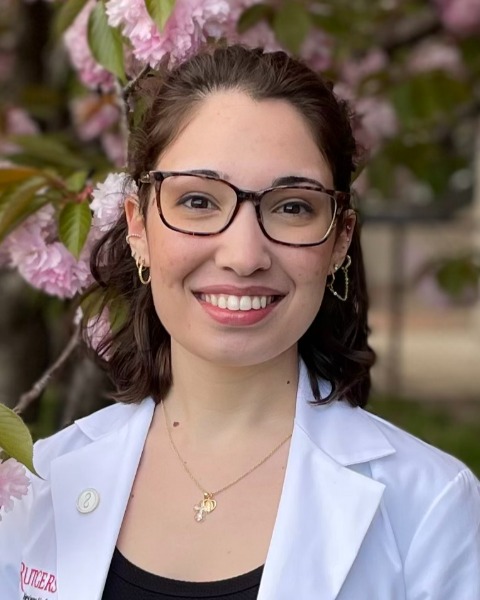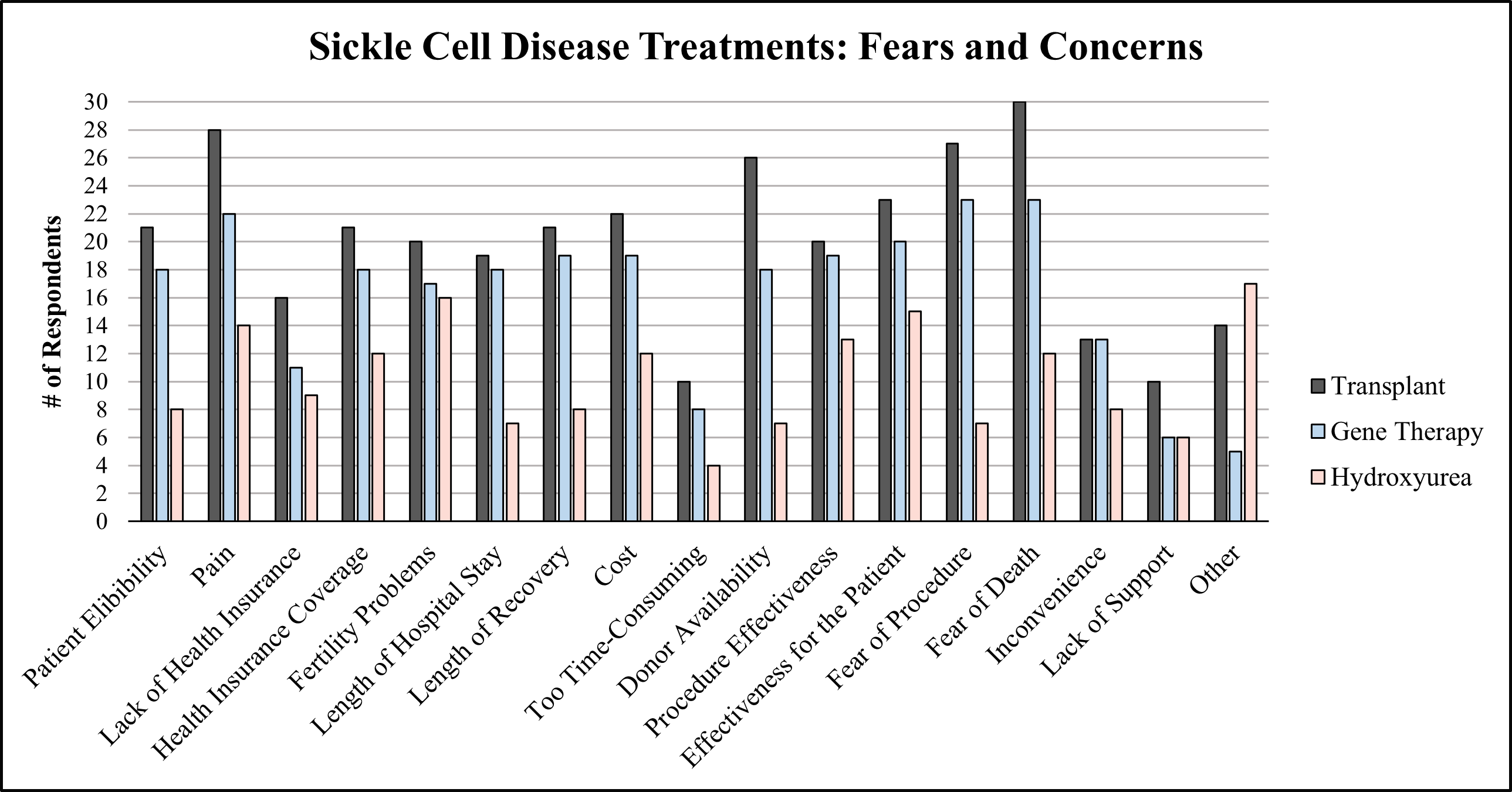Hematology/Oncology
Session: Hematology/Oncology
350 - Treatment-Related Fears of Pediatric Sickle Cell Disease Patients and their Caregivers
Friday, May 3, 2024
5:15 PM - 7:15 PM ET
Poster Number: 350
Publication Number: 350.221
Publication Number: 350.221

Olivia F. Scott, B.S. (she/her/hers)
Medical Student
Rutgers New Jersey Medical School
Wall Township, New Jersey, United States
Presenting Author(s)
Background: Sickle cell disease (SCD) is a lifelong condition with serious complications and effective treatment is vital to ensure optimal outcomes. Non-adherence is a significant barrier to treatment, especially with hydroxyurea (HU). Identified contributing factors include parental doubt of effectiveness, concern for long-term safety, fund of HU-related knowledge, and fear of side effects. Patients and families defer potentially curative treatments such as gene therapy (GT) and bone marrow transplant (BMT) due to similar misgivings, but adequate education can promote more favorable views. Understanding patient and family perspectives can strengthen education efforts which has the potential to improve adherence and outcomes.
Objective: To determine the most prevalent fears and concerns of patients with SCD and their caregivers regarding treatment options, and to identify targets for patient education.
Design/Methods: We surveyed 73 patients and their caregivers receiving care at the Valerie Fund Pediatric Hematology-Oncology Clinic at the Children’s Hospital of New Jersey in Newark, New Jersey. The respondents answered questions about their own disease, their experience with BMT, GT, and HU, and their fears and concerns about each. P-values were calculated using Fisher’s exact test (significance level = 0.05).
Results: 14 patients and 59 caregivers were surveyed. Two caregivers chose not to identify their concerns about BMT and were excluded from analysis. 63.4% of respondents reported fears/concerns for BMT; 31.5% for GT; and 27.4% for HU. The most common concerns for BMT were pain and fear of death; for GT were fears of procedure and death; for HU were "other" (often side effects) and fertility problems (Figure One). Patients reported fears/concerns less often than caregivers, but this difference was not significant (p-values < 0.05; Table One). None of the surveyed patients had received either BMT or GT. Respondents whose patients received HU were more likely to report no fears/concerns, but this difference was not significant (p-value < 0.05; Table Two). Interestingly, those who were evaluated for BMT were more likely to report fears/concerns about the procedure, but the difference was not significant. (p-value < 0.05; Table Two).
Conclusion(s): Patients and caregivers reported having the most fears/concerns of BMT, followed by GT, then HU. Some respondents had each of the possible concerns for every treatment option. Further studies with greater statistical power are needed to validate these findings and identify the effectiveness of patient and family education in improving patient utility of SCD treatment.

.png)
.png)
